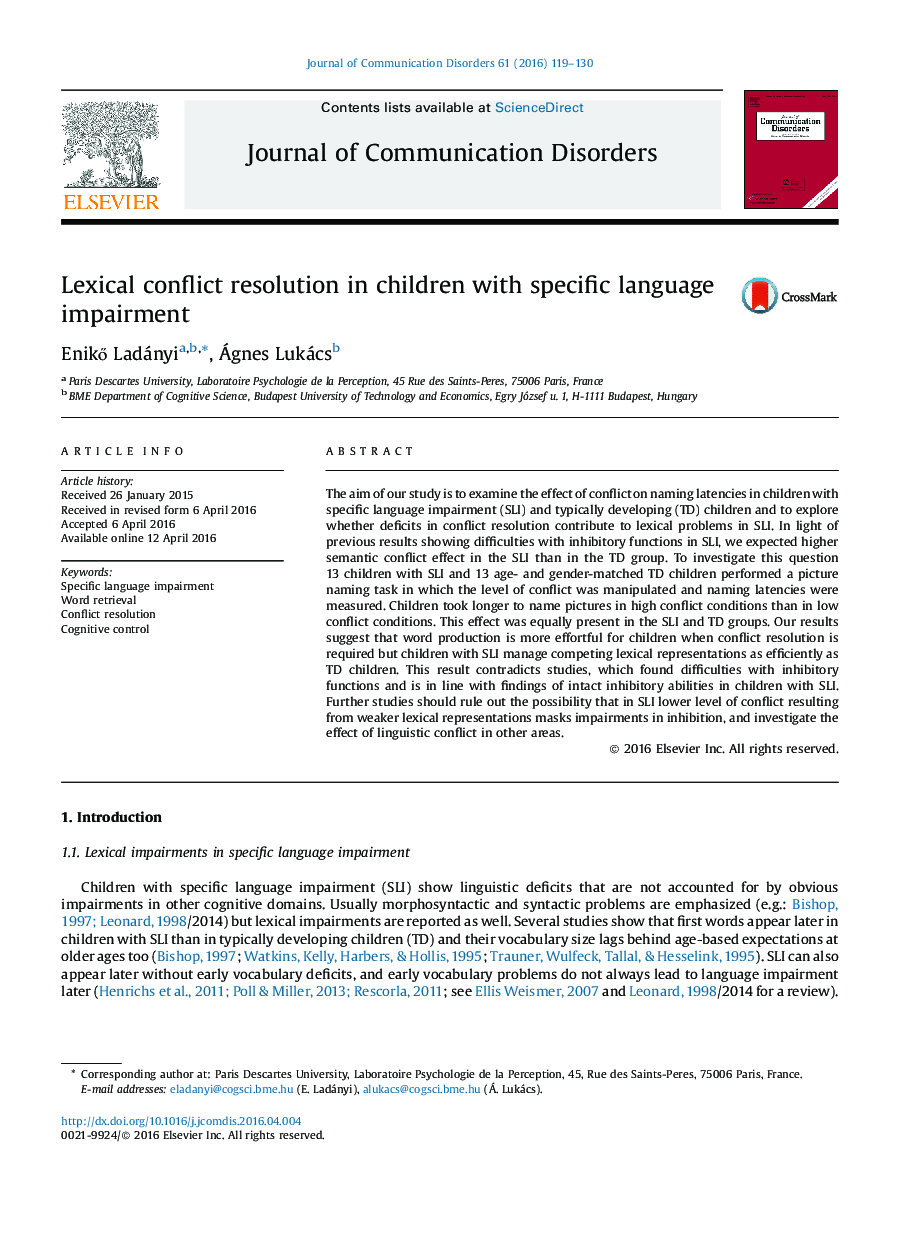| Article ID | Journal | Published Year | Pages | File Type |
|---|---|---|---|---|
| 910739 | Journal of Communication Disorders | 2016 | 12 Pages |
•The effect of lexical conflict on children with SLI and TD children was investigated.•A picture naming task was created with manipulating the level of conflict.•Children resolved conflict slightly less efficiently than adults in previous studies.•No prominent differences in conflict resolution abilities between SLI and TD groups.
The aim of our study is to examine the effect of conflict on naming latencies in children with specific language impairment (SLI) and typically developing (TD) children and to explore whether deficits in conflict resolution contribute to lexical problems in SLI. In light of previous results showing difficulties with inhibitory functions in SLI, we expected higher semantic conflict effect in the SLI than in the TD group. To investigate this question 13 children with SLI and 13 age- and gender-matched TD children performed a picture naming task in which the level of conflict was manipulated and naming latencies were measured. Children took longer to name pictures in high conflict conditions than in low conflict conditions. This effect was equally present in the SLI and TD groups. Our results suggest that word production is more effortful for children when conflict resolution is required but children with SLI manage competing lexical representations as efficiently as TD children. This result contradicts studies, which found difficulties with inhibitory functions and is in line with findings of intact inhibitory abilities in children with SLI. Further studies should rule out the possibility that in SLI lower level of conflict resulting from weaker lexical representations masks impairments in inhibition, and investigate the effect of linguistic conflict in other areas.
